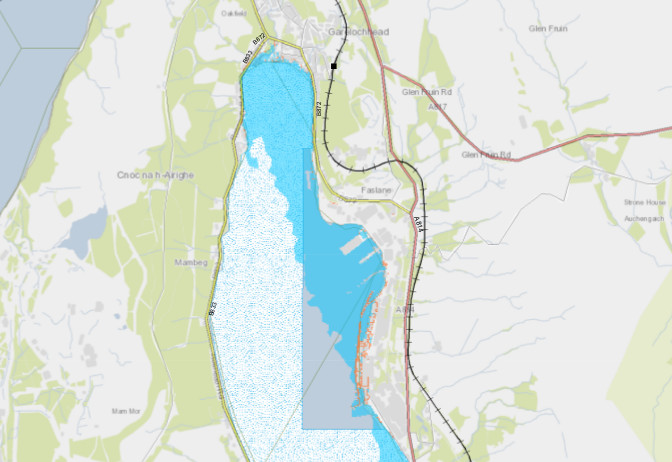Future sea level rise caused by climate change could threaten buildings and moorings at the Faslane naval base, which houses the UK’s nuclear-armed submarines. The report, commissioned by Scottish National Heritage, looks at the possible impact of sea level rise on the Firth of Clyde if global greenhouse gas emissions continue to rise.
Under the emission scenario considered in the report, the sea level in the Firth of Clyde is predicted to rise by 47cm by 2080. There would also be an increase in the effects of storm surges, but this would not be as significant. The report found that these changes would mean that during a major tidal flood buildings at the base that are close to the shore and non-floating moorings would be inundated.
This type of major flooding event would have a 0.5% chance of occurring in any given year. The report does not consider the effects of wave overtopping or the impact of river and surface water running into the Firth. All of these additional factors would be likely to increase the severity of any flooding incident.
The emission scenario used comes from Met Office projections for the UK, but is derived from global emission scenarios used by the Intergovernmental Panel on Climate Change (IPCC). The scenario used is a high emissions scenario with a continuing intensive use of fossil fuels.
The report considers whether managed realignment schemes, where areas of land are intentionally returned to salt marsh, could alleviate the impact of flooding in the Firth. It concludes that there is some potential for localised alleviation, but a great number of schemes would be required to affect the volume of flooding in the whole region, and suggests that the willingness of landowners to allow managed realignment on their land is likely to prove a barrier.
